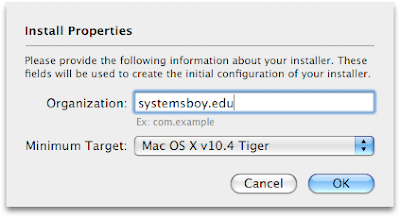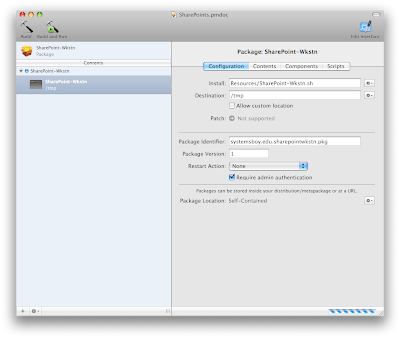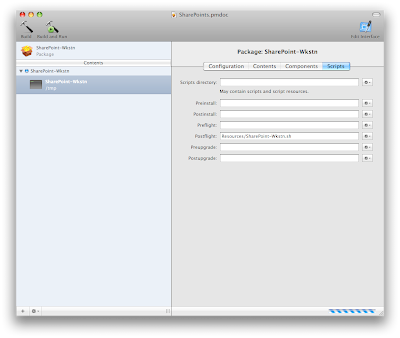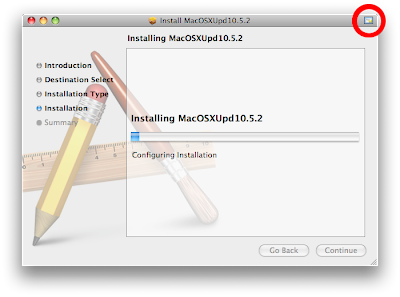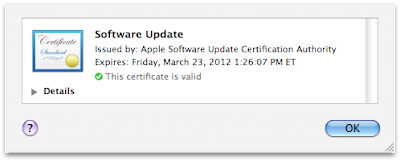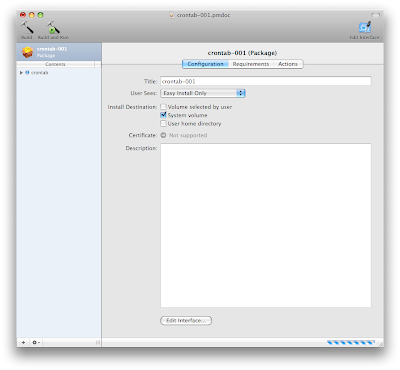I've become quite the package whiz, if I do say so myself. Actually, I'm probably doing something ass-backwards, but still, I wanted to share some of my working methods as they seem to be, well... Um... Working...
One of the things I'm doing is using packages to run shell scripts that make computer settings (like network settings and user-creation) rather than actually installing files.
(click image for larger view)
This can be done in PackageMaker by taking some creative liberties with preflight and/or postflight scripts. The only hitch is that PackageMaker insists that you install at least some files onto the target system.
(click image for larger view)
So the majority of my packages contain only a single script. That script first gets installed to /tmp, thus fulfilling PackageMaker's "must install files" directive.
(click image for larger view)
The script then runs as a posflight script, and the last line of the script deletes the instance of the script in /tmp, just for good measure.
(click image for larger view)
It could be argued that there's no reason to create packages from scripts, that you could just as easily run the scripts directly in ASR, but packages offer a couple of advantages. For one, packages leave receipts, so it's easy to check and see if something's been set on a computer. For two, packages are easy to deal with; assistants and other SysAdmins know how they work and can easily understand how to use them. Need to change a machine's settings? Don't run a script. Hell, don't even bother opening System Preferences. Just open and run a package. What could be easier (and less error-prone, I might add)? From an ease-of-use perspective, packages have a huge advantage. And ease-of-use adds efficiency. Which is why I not-so-suddenly find myself in the envious position of being able to build systems in about half the time (or less!) it used to take. That's a huge improvement!
Using this method (and sound DNS) I've been able to write packages that configure network settings, create computer-specific users, set custom disk and file permissions, set up autofs, bind to our authentication server and set up SSH for password-less login.
Next on the list: File Sharing!
Should be fun.

